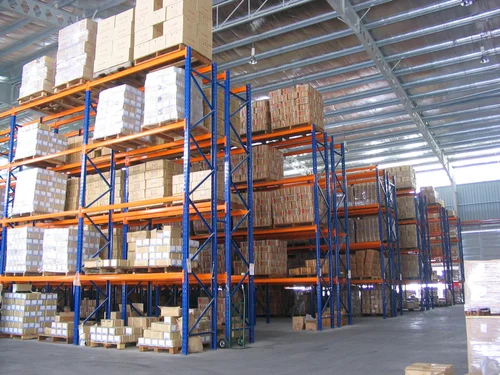In any warehouse or industrial setting, the efficient storage and organization of goods are of paramount importance. Pallet rack systems play a pivotal role in ensuring that warehouses are not only well-organized but also safe for employees. This comprehensive guide aims to shed light on pallet rack systems, their types, benefits, and best practices for maintaining a secure workplace. A pallet rack system is a storage solution designed to hold palletized goods and materials. These systems consist of upright frames, horizontal beams, and wire decking or pallet supports. The primary purpose is to maximize vertical space utilization, making it a cost-effective and space-efficient solution for storing large quantities of goods.
Types of Pallet Rack Systems
Selective Rack System – This is the most common type of pallet rack. It allows for direct access to each pallet, making it suitable for facilities with a high variety of product types. Selective rack systems are versatile and easy to reconfigure.
Drive-In and Drive-Through Racking – These systems are ideal for high-density storage. In a drive-in system, pallets are stored in a last-in, first-out LIFO configuration. Drive-through systems, on the other hand, allow for a first-in, first-out FIFO setup. They are well-suited for storing large quantities of the same product.
Push-Back Racking – Push-back racking systems offer high-density storage with multiple pallets stored in a single lane. Pallets are loaded from the front and pushed back by subsequent pallets. This allows for dynamic storage with easy access.

Pallet Flow Racking – Pallets move on rollers or wheels, utilizing gravity to move pallets to the picking face. This system is ideal for warehouses that require a FIFO system for perishable goods.
Cantilever Racking – Cantilever racking is designed for the storage of long, oversized, or oddly shaped items such as lumber, piping, or furniture. It consists of arms that extend from vertical columns, providing easy access.
Benefits of Pallet Rack Systems
Space Efficiency – Pallet rack systems maximize vertical space, optimizing warehouse floor space for other operations.
Accessibility – They provide easy access to goods, enhancing the efficiency of order picking and inventory management.
Safety – Well-maintained pallet rack systems enhance workplace safety by reducing the risk of accidents and product damage.
Customization – Pallet rack systems are highly customizable, allowing businesses to tailor the storage solution to their specific needs and go now.
Best Practices for a Secure Workplace
Regular Inspections – Implement a routine inspection schedule to check for any signs of damage or wear and tear on the racks. Damaged components should be replaced promptly.
Weight Limits – Ensure that pallet racks are not overloaded. Each rack should have a clearly marked weight limit, and employees should be trained to adhere to these limits.
Proper Training – Employees working with pallet rack systems should receive training on safe loading, unloading, and inspection procedures.
Safety Accessories – Consider installing safety accessories such as rack guards, column protectors, and safety netting to prevent accidents and damage.
Organized Storage – Maintain a well-organized storage plan, with clearly labeled aisles, bays, and product locations to reduce the risk of mishaps.
Emergency Procedures – Have clear emergency procedures in place for addressing accidents or structural failures.

